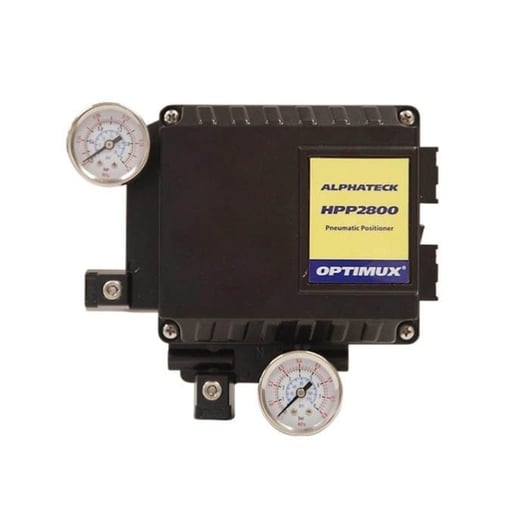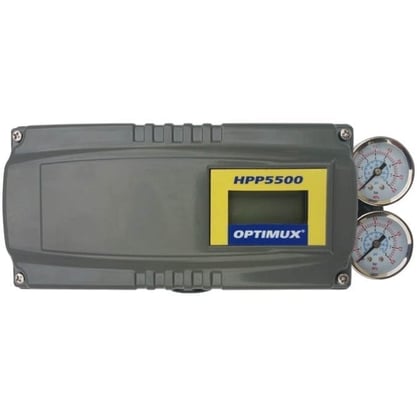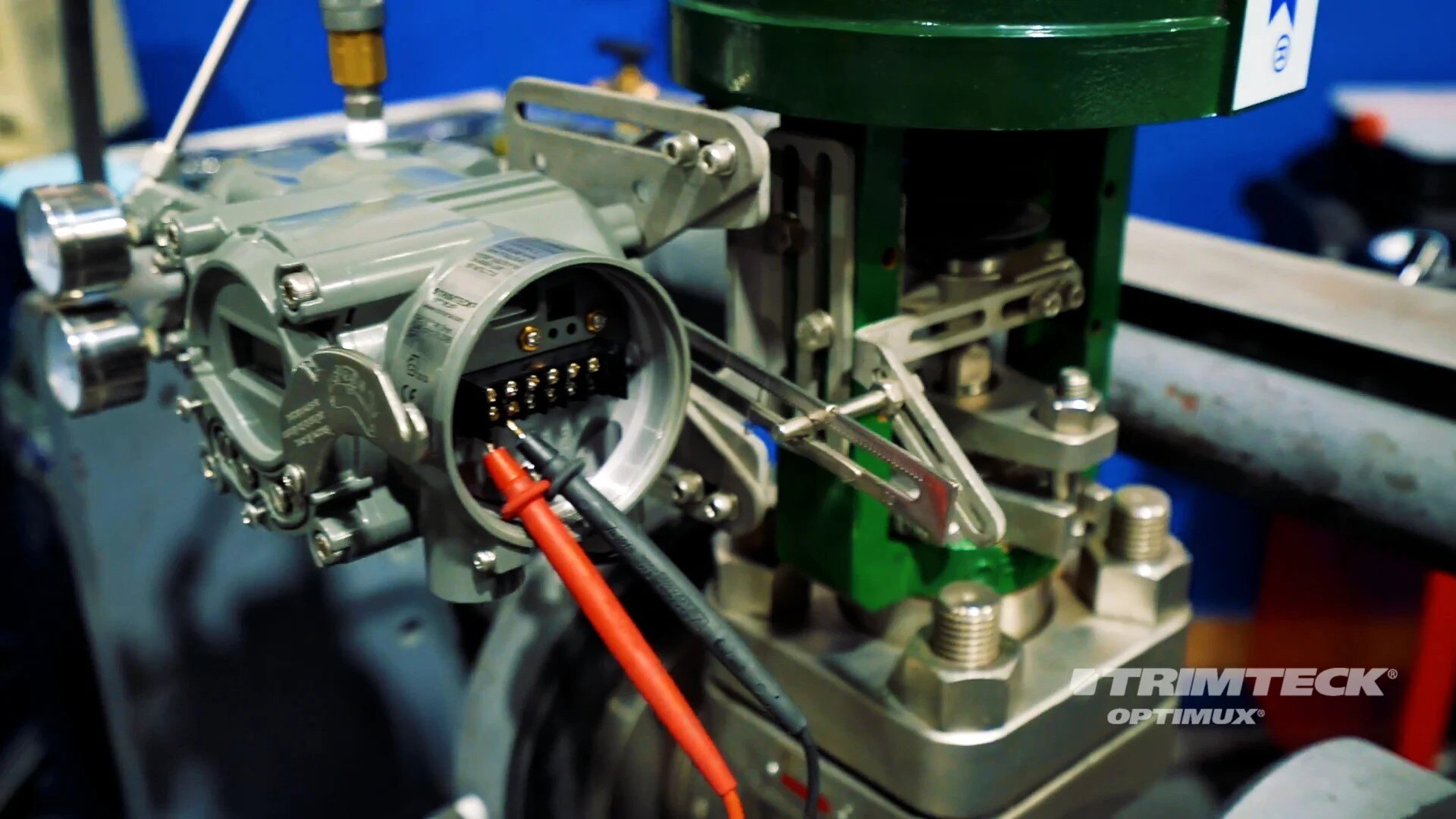Control Valves 101: Valve Positioners
While control valves keep critical processes flowing in every major industry—from metals and mining to aerospace and defense—they rarely do it alone. This is especially true if you’re an engineer looking to maximize efficiency with exact control of your flow or process variable.
In our “Control Valves 101” content series, we’ve already explained the role of **actuators** in changing the valve position. But you need a control valve positioner to optimize their movement accuracy and the valve position.
In this blog post, you’ll learn what a valve positioner does, the two main types of valve positioner, and critical design choices.
What is a control valve positioner?
Every automated control valve has an actuator—a device mounted on the valve that creates the motion to change the valve’s position. But, an actuator acting alone can’t control process variables with great precision, which you need for a fully efficient process control system. It requires a valve positioner.
A valve positioner is a signal-receiving device that attaches to an actuator. The signal comes from a controller. The controller measures and controls a process variable in the process control system, such as temperature, pressure, or flow rate.
The valve positioner constantly receives a signal from the controller. This signal tells the valve positioner the metric that the process variable should meet (known as a set point) and compares it to the actual process variable.
Let’s say the valve positioner finds that the process variable has deviated from the set point. In response, it sends the necessary power to move the actuator until the valve reaches the correct position. This causes the process variable to meet the set point again.
The signal comparison-correction process is constant, keeping the process variable in check without human monitoring or intervention.
Types of control valve positioner
There are two main types of control valve positioners, which are determined by the kind of signal they receive—pneumatic or digital.
Pneumatic positioner
Pneumatic positioners receive and convert a pneumatic signal—gas or air pressure in a pipe—to move an actuator. As such, it doesn’t require an electric power supply.
Typically, you would use a pneumatic positioner if:
- The process control environment exposed the valve positioner to extreme temperatures, which would damage electronic equipment.
- The valve positioner operates in an explosive atmosphere, where leaked electricity could ignite flammable gas or dust.

Digital positioner
Digital positioners receive and convert an electronic signal to move an actuator, so they require an electric power supply.
While all positioners allow more precise control of the valve position, digital positioners have extra benefits. These include:
- Faster setup: They often feature automatic calibration that takes minutes instead of hours.
- More accurate calibration: This means even more precise flow control and increased efficiency.
- Multiple characterizations: Characterization determines the relationship between the control signal and the valve position. In linear characterization, for example, the valve position correlates with the signal—if the signal is 50 percent, the valve position will be 50 percent open. But, in equal percentage characterization, small control signal changes cause smaller valve position changes for a low flow rate but larger valve position changes for high flow rates.
- Advanced diagnostics: Some digital positioner models can collect and share data indicating your control valve's integrity and performance. This provides an early warning for issues that could lead to unplanned downtime.
Due to their electronic components and electric power supply, some applications or environments might not seem suitable for digital positioners. But valve positioner housing can change that.

Types of control valve positioner design
A valve positioner’s design, including its external housing, helps it function efficiently and protects it from damage and deterioration. But, positioner design can also mitigate the risks associated with digital positioners. There are three main types of valve positioner design, which are:
General purpose
A general purpose valve positioner is all you need for a non-hazardous process control environment. Its housing protects the valve positioner components from dust or water, avoiding unplanned maintenance and prolonging their lifespan.
Intrinsically safe
Manufacturers like Trimteck engineer intrinsically safe valve positioners to limit their thermal or electrical energy. This includes simpler circuitry, temperature control, and high dust resistance, meaning they cannot catch fire and trigger an explosion in an explosive atmosphere.
Explosion-proof
Explosion-proof valve positioners do not need the same design precautions as intrinsically safe valve positioners because they have an explosion-proof housing. It means that, even if the internal components catch fire, the flame and gas can’t escape to ignite the external atmosphere.
Precision solutions for precision control
The right valve positioner can really move the needle on your process efficiency targets. But, to do that, it needs a control valve and an actuator that can match its capabilities.
At Trimteck, our expert Applications Engineers will help you specify the optimal custom solution for your unique process control system. They’ll factor your system requirements into every decision, from the control valve trim to the actuators and positioners. Share your specifications with us online to get your tailored quote.


